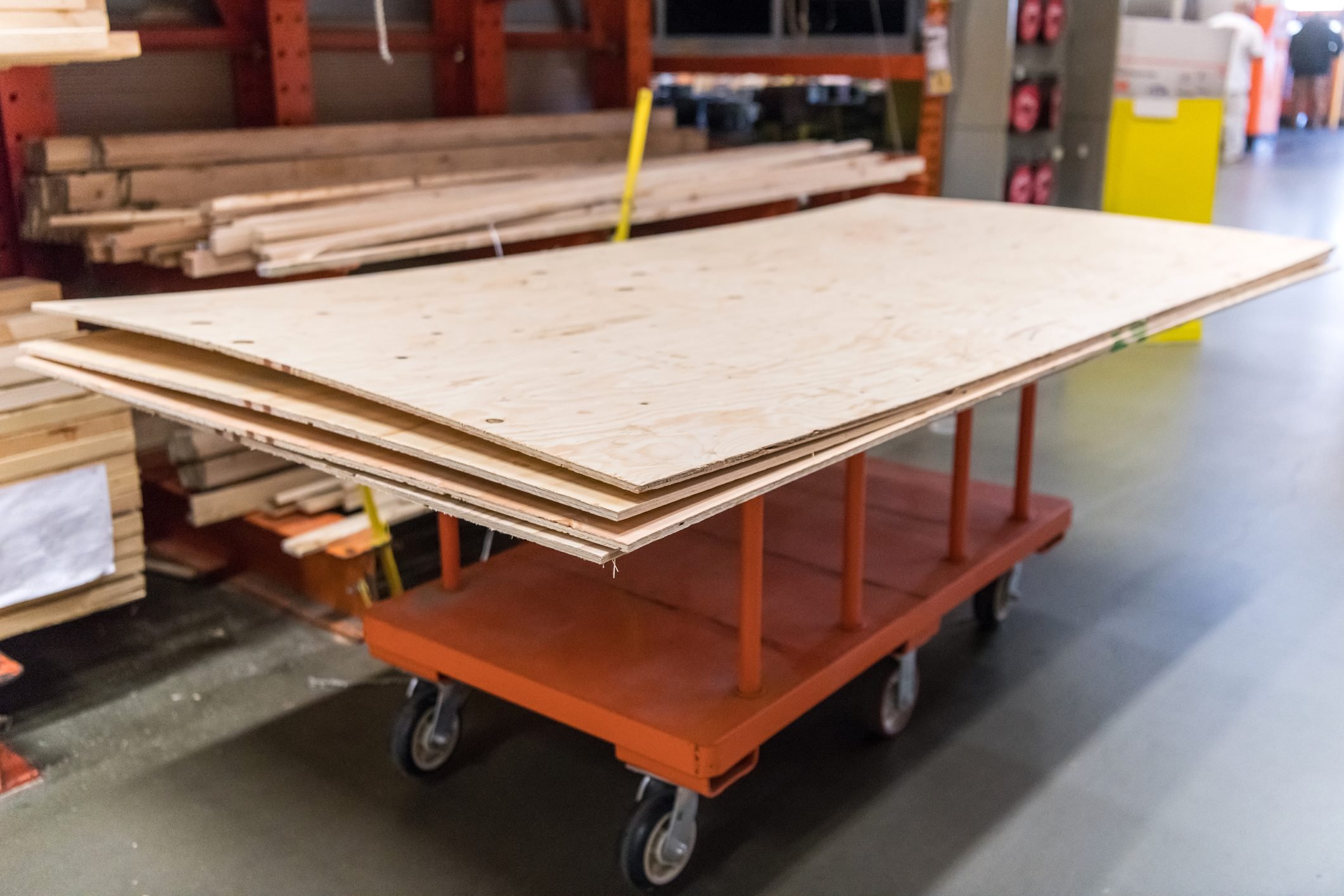Wildfires, labor shortages and supply chain issues are making plywood harder to get and more expensive. Here's what you can use as alternatives.

If You Can’t Get Plywood Now, Try This Instead

It’s safe to say that no one active in the construction trades today can remember a time when plywood wasn’t a staple building material.
The U.S. Forest Service equates the increased use of plywood in the 1920s to the beginning of the industrial age. Historians might argue that point, but you get the idea. It’s been a preferred material for all aspects of home building and remodeling for at least a century.
Unfortunately, since the onset of the COVID-19 pandemic in 2020, plywood has become more expensive and harder to get. There are many reasons for this, and the situation may improve in the future. Until it does, for budgetary and scheduling reasons, it’s prudent to consider alternatives when planning a project.
On This Page
Why Is Plywood in Short Supply?
The plywood shortage is part of a general lumber shortage that can be blamed in part on the pandemic and in part on the recent spate of wildfires in western North America.
According to The Center for Climate and Energy Solutions, climate change is the underlying cause of the wildfire problem. Add a spike in new housing projects to meet an increased demand, and you’ve got a perfect storm of reduced supply and increased demand for lumber in general, not just plywood.
In the summer of 2021, wildfires burned millions of acres in British Columbia, where three of the continent’s six largest lumber producers are based.
The fires compelled Canfor, a major lumber producer, to cut back production by more than 100 million board feet, and forced implementation of short-term curtailments in Canadian sawmills. The fires burned more than a million acres in Washington and Oregon, also major plywood producers.
Pandemic-induced labor shortages created bottlenecks at American sawmills that also contributing to soaring lumber prices, according to the Washington Post. By raising prices, sawmills raised the pay of their workers, but many preferred to stay home anyway to avoid infection.
Production issues are slowly being resolved. But supply chain issues caused by a truck driver shortage hiked up transportation costs, and inflation is boosting consumer goods prices across the board.
When the supply chain and labor shortage issues are resolved and inflation begins to trend downward, Conner Industries predicts plywood prices will fall. But it’s not clear when that will happen.
What Can You Use Instead of Plywood?
The best plywood alternative depends on the use. The material must have enough structural integrity for building. That eliminates polyurethane foam board, which is mostly used as insulation. Sheathing needs to be moisture resistant. If you’re using a plywood alternative for interior cabinetry, appearance is important.
Oriented Strand Board (OSB AKA Chip Board)
Builders already use OSB interchangeably with plywood for roof and wall sheathing and subflooring.
Available in the same size sheets as plywood, it’s fabricated by layering strands of wood chips, fixing them under pressure and treating them with a wax or resin to make the final product water-resistant. The textured surface of OSB, with its pattern of interwoven wood strands, makes it suitable only for structural purposes.
And OSB isn’t necessarily cheaper than plywood. At the time of writing, a 4-ft. x 8-ft. sheet of 19/32-in. OSB costs around $56 compared to $48 for comparable plywood sheathing. OSB can be manufactured from wood waste, so it’s readily available at outlets already low on plywood in comparable thicknesses.
Medium Density Fiberboard (MDF)
Cabinetmakers and interior woodworkers are familiar with MDF, which can be fashioned into trim, cabinets and cabinet doors and wall paneling.
MDF is manufactured by pressing wood fibers together with a strong adhesive into a solid, dense matrix. The resulting plywood-sized panels have a smooth, grain-free surface, ideal for painting or laminating with a wood or plastic veneer.
Because it’s made from recycled materials, it’s a greener building product than plywood. It’s heavier than plywood and lacks the resilience. But when properly finished, it’s less responsive to changes in temperature and humidity. A 4-ft. x 8-ft. sheet with a thickness of 5/8-in. weighs about 85 pounds, so full sheets require two people.
High Density Fiberboard (HDF)
Also known as hardboard, HDF is similar to MDF in construction. But the wood particles are compressed with more force, giving the finished product a harder surface. It’s often used by furniture makers and can be molded into wall panels and interior trim.
Unfortunately, plywood-size sheets of HDF are only available in thin thicknesses, with 1/8-in. hardboard the most common. Builders use it all the time as a substrate for sheet vinyl and linoleum flooring. In a pinch, you can find more uses for it.
Particleboard
Also made with recycled materials, particleboard is one of the least expensive plywood alternatives. It’s also made by pressing together wood particles with an adhesive, but the particles are larger and the overall matrix less dense. Builders use it extensively as a substrate for laminates. You can buy it factory-laminated for building cabinets, shelves and interior furnishings.
Unlaminated particleboard is unattractive even when painted, so it’s not a great cabinet material. But laminated particleboard can be attractive, so it’s popular in many store-bought vanities and kitchen cabinets.




















